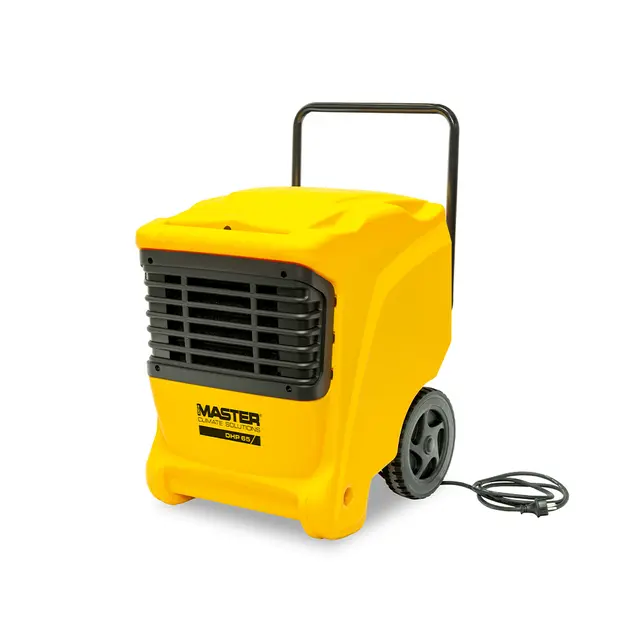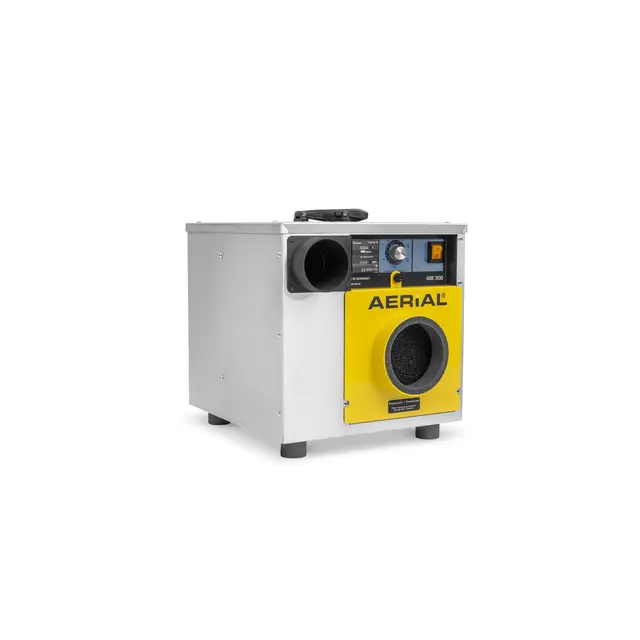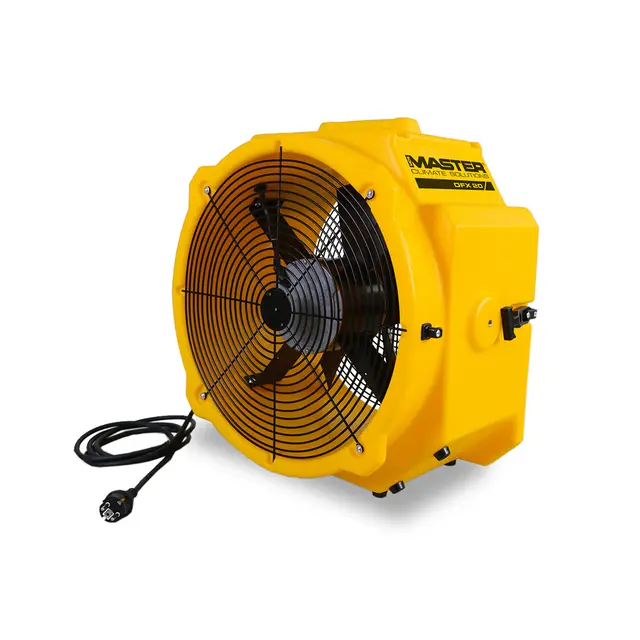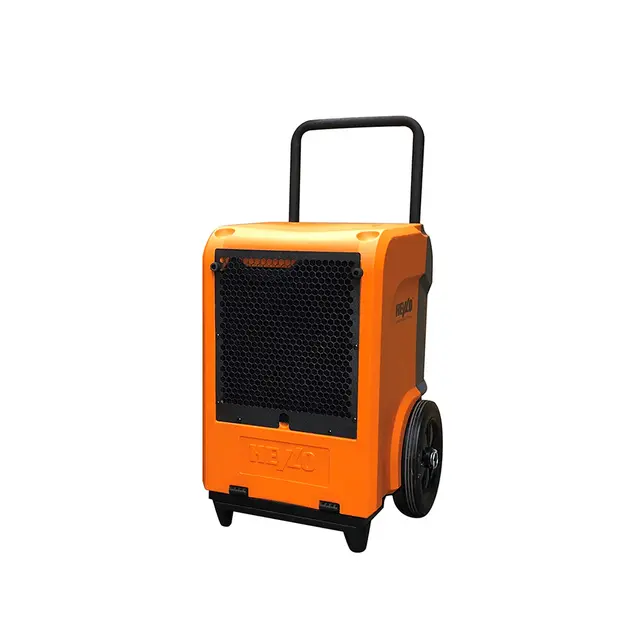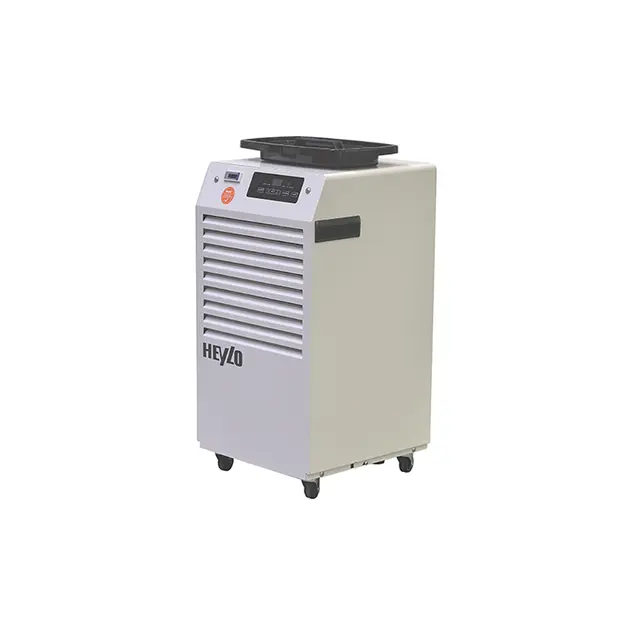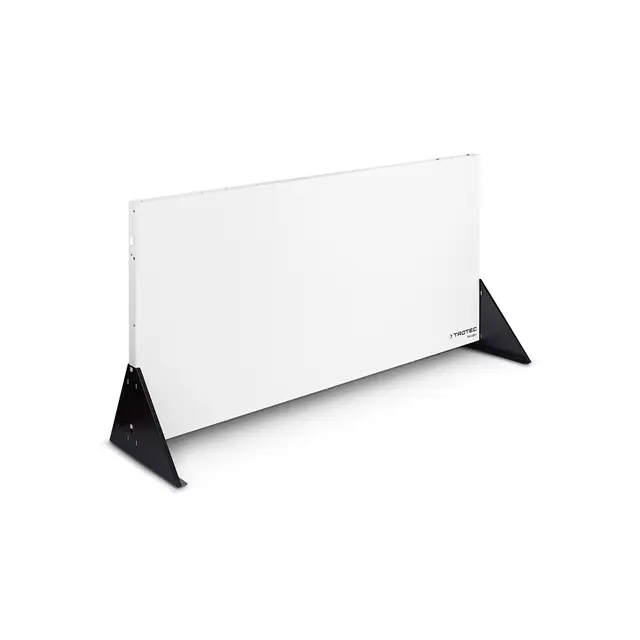3 ways to dehumidify air during construction projects
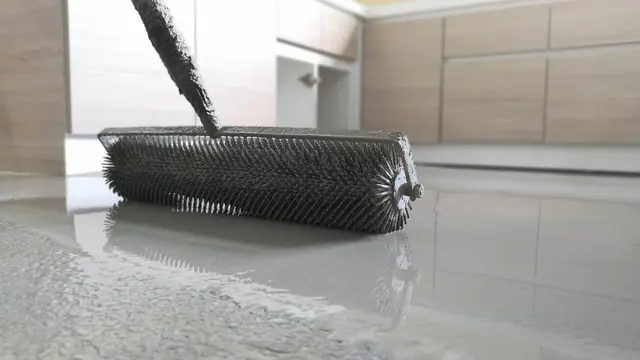
- Home
- Insights
- Humidity control and drying insights
- 3 ways to dehumidify air during construction projects
In this article we explore the various methods of dehumidification to use on construction sites or home renovations. This can be done with different types of dehumidifiers, heaters and ventilators, all of which Master can provide in one building drying package.
Historically, construction work on an average building went on for 6-9 months and the building materials would then usually have dried through natural ventilation by the time the building was finished. But today, construction work is very efficient and much faster. This is helped by using advanced construction dehumidification to remove the excess water in the various building materials before the building can be occupied.
Dehumidification is a process that removes excess humidity in the air because it absorbs the moisture that evaporates from building materials. The process can be carried out by means of using heaters and ventilation units, condensation dehumidifying or adsorption dehumidifying. This article presents the pros and cons of each of them.
1.Heating and ventilation
With this method, you simply increase the air temperature within the construction site, and then you apply intense ventilation. The efficiency is very dependent on external conditions. In general, the lower the external temperature and the higher the temperature of the dehumidified room, the more effective the method becomes. Therefore, the best effects can be achieved during winter.
When dehumidifying humid walls, your room temperature should not exceed 35°C. Higher temperatures may cause excessive increase in pressure of steam contained in walls which will then lead to cracking and damaging of the walls. Lack of proper ventilation (air exchange) while dehumidifying humid walls with this method causes steam to be absorbed by drier parts of walls and the ceiling. Also, you should note that heating the air with gas heaters has the opposite effect you might well expect. The reason is that burning propane-butane produces carbon dioxide and steam. That means that as your air temperature increases, so does your air humidity!
Using heating and ventilation to dehumidify your construction site is very costly. This is mainly a result of the low effectiveness (the required time for dehumidifying is long) and the fact that the best effects are achieved at high temperatures (this requires a lot of heating power).

Dehumidifying by ventilation and heating:
1 – air removed outside; 2 – air sucked from outside; 3 – extractor fan; 4 – heater; 5 – heated air
2.Condensation dehumidifying
Condensation dehumidifying is simply the principle of removing humidity from the air by cooling it below the dew point where it will then condensate. Condensation air dehumidifiers are based on this principle. They contain the following components: Extractor fan, compressor, heat exchangers (condenser and evaporator), and an expanding element. The extractor fan forces flow of humid air through heat exchangers. The evaporator temperature is lower than dew point temperature which causes condensation of air humidity. The condensate is gathered in a dehumidifier tank or removed to the sewage system or the outside through a drainage. After passing the evaporator, the cooled and dried air flows through the condenser where it is heated. Thanks to this, the relative humidity level further decreases. The now dry air is then returned to the room.
The temperature of air coming out of the dehumidifier is 3-8°C higher than the temperature of the air that enters it. The above-mentioned temperature increase may cause faster evaporation of water e.g. from wet walls which facilitates dehumidifying instead of posing a damage risk as it is the case for the heating and ventilation method.
The efficiency of condensation dehumidifiers depends on the operating conditions (temperature and humidity) and the specifications of the applied condensation dehumidifier. Condensation dehumidifiers perform optimally when the temperature and relative humidity are both above a certain level. Conversely, that also means that as the water contents decreases so does the efficiency of this type of machinery. In general, condensation dehumidifiers are not suitable for use in temperatures below 0-5°C.
Condensation dehumidifying is definitely faster and less energy-consuming than drying by means of heating and ventilating primarily thanks to eliminating exchange of air contained in the room. It is the preferred and most effective way to remove excess moisture from most construction sites.
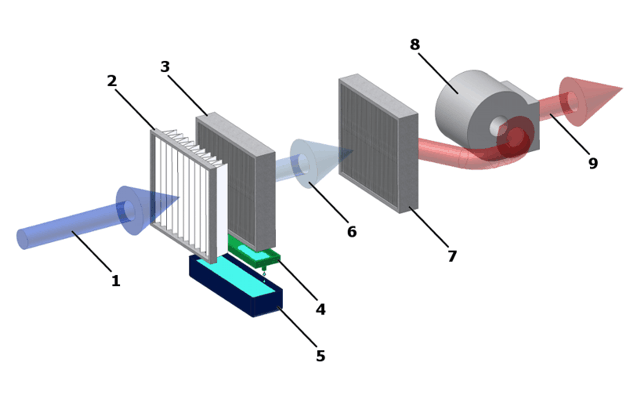
Condensation dehumidifying:
1 – humid air; 2 – filter; 3 – evaporator; 4 – dripping tray; 5 – condensate tank; 6 – dehumidified and cooled air; 7 – condenser; 8 – extractor fan; 9 – dehumidified and heated air
3.Adsorption dehumidifying
Adsorption dehumidification is the process of removing humidity from the air by absorbing it with hygroscopic materials. The types of adsorption dehumidifier products used for this contain a rotor, a driving unit, extractor fans, air heater, filter, casing, and fittings.
The rotor is normally made of properly profiled aluminium sheets (creating axial capillaries) with a surface covered by a hygroscopic substance. This helps increase the humidity-adsorbing area and capability of the unit. The dehumidifier has a dehumidifying sector and regeneration sector. While turning, the rotor causes the humid hygroscopic material to move to the regeneration sector where hot air flows through the rotor to remove humidity that is then sent outside.
A further feature of the rotor is its high durability, washability, ability to self-clean and prevent the development of bacteria. A great advantage of this type of dehumidifying is the possibility to dehumidify air without cooling as well as dehumidifying air in sub-zero temperatures. Due to a multitude of advantages of this method, it is widely used in industrial applications, e.g. pharmaceutical, food, and in AC systems, and less so on construction sites.
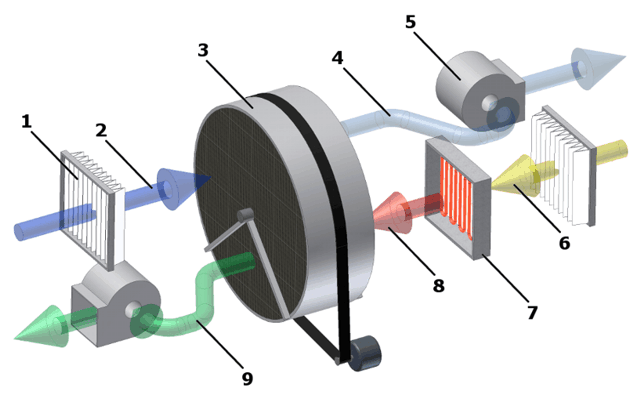
Adsorption dehumidifying:
1 – filter; 2 – humid air; 3 – rotor; 4 – dehumidified air; 5 – extractor fan; 6 – regeneration air; 7 – heater; 8 – hot regeneration air; 9 – humid regeneration air
View our full range of range of industrial and commercial dehumidifiers, and get in contact to discuss your construction climate solutions and requirements to see how we can help.
Related products
Featured insights
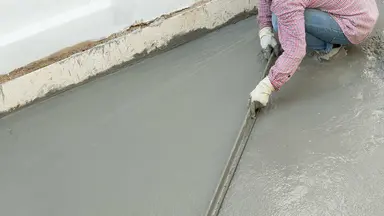
Don't let harmful moisture take your building back to square one
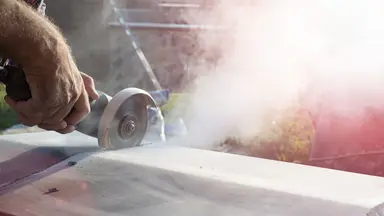
Removing the risk of dust during building work and renovations

How we can speed up drying times on vital building projects
Need help with choosing the right solution? Our team of over 100 climate control experts can assist.
You can also reach out or join the discussion on our Social Media. Check out our LinkedIn page.
